In 2007, long before naval drones were in wide use, BVT Surface Fleet unveiled a concept that felt like it had leapt from the pages of science fiction: the UXV Combatant.
It was billed as a drone carrier for the Royal Navy, capable of operating UAVs, UUVs, and uncrewed surface vessels.
A mothership for robots across air, sea, and even land domains. In principle, it was a bold and prescient idea. In practice, it never stood a chance. The UXV Combatant was built around an assumption that drones required a fundamentally new type of vessel. That assumption has not held.
The UXV was designed to act as a permanent base and control hub for swarms of unmanned vehicles. Its shape and layout echoed aspects of the Type 45 destroyer, but it went far beyond existing naval thinking at the time. Two angled flight decks, arranged in a distinctive “V” formation, would support drones, V/STOL aircraft, and helicopters. It featured a moon pool to launch underwater drones, hangars for maintenance, and a vertical launching system for cruise missiles. It even had a 155mm naval gun, envisioned to fire rapid bursts in support of forces ashore.
The designers imagined it doubling as an amphibious assault platform, capable of embarking troops and their gear. It would have been part frigate, part light carrier, part robot command centre. The whole thing displaced just 8,000 tonnes, which is compact for something trying to do so much.
The ship was presented at DSEI 2007 with fanfare, along with mock-ups and artist renderings. But it never progressed beyond the concept stage. It quietly disappeared from the conversation in the years that followed.
This wasn’t because the idea was flawed. In fact, many of its predictions are now being proven correct. The real problem was that the UXV was too bespoke and arrived too early.
At the time, the Royal Navy was already committed to major projects like the Type 45 destroyers, Astute submarines, and the Queen Elizabeth-class aircraft carriers. Budgets were tight. The technology to make the UXV work, particularly in terms of the very naval drones it would use, was not yet mature. And the idea of designing and building an entirely new class of ship just to operate a then-unproven capability was difficult to justify.
It also didn’t help that the UXV didn’t quite fit any existing mould. It was neither a full carrier nor a destroyer. Too lightly armed to be a capital ship, too large and complex to be a specialist platform. In trying to be everything… drone carrier, troop transporter, missile platform. It became difficult to place within the Royal Navy’s existing force structure.
But while the UXV died on the drawing board, its central idea, that future naval warfare would rely heavily on uncrewed systems, has become accepted doctrine. What has changed wasn’t really the end goal, but the route to getting there.
Instead of building a drone-optimised warship from scratch, navies are adapting what they already have. HMS Prince of Wales is the clearest example for the Royal Navy. Over the past two years, the Royal Navy has used the carrier to trial uncrewed aerial vehicles, including large fixed-wing drones like the Mojave, and rotary-wing platforms like the Malloy T-150. These are payload-capable, long-endurance systems being tested for real missions, from logistics to ISR to strike.
HMS Prince of Wales is becoming a drone carrier by evolution.
And it’s not just the carriers. Frigates like HMS Lancaster have trialled rotary UAVs like the Peregrine, a navalised Camcopter, expanding their sensor range without altering the ship’s design. Modular drone systems are being added to auxiliaries and mine countermeasure platforms. The Royal Navy’s Future Maritime Aviation Force is focused on exactly this kind of flexible integration, making drones part of the air wing rather than designing a separate ship just to carry them.
That’s the key lesson. The UXV Combatant’s greatest strength, its bespoke nature, was also its biggest weakness. It anticipated a future that has since arrived, but assumed that future would demand a purpose-built hull. In reality, navies have embraced adaptability. Rather than building a single high-tech mothership, they are spreading drone capabilities across multiple ship classes.
That may still change. The proposed Type 32 frigate has been suggested as a potential host for autonomous systems. And it is not inconceivable that one day the Royal Navy or another major force will commission a true drone carrier. But for now, the trend is clear. Drones are being integrated into the fleet gradually, ship by ship, role by role.
So the UXV Combatant was, in many ways, a brilliant idea. It just belonged to a timeline that didn’t exist yet. Today’s Royal Navy is realising much of what the UXV envisioned, not with a single warship, but with a distributed network of vessels, aircraft, and uncrewed systems working together. That might not make for as striking an artist’s rendering, but it is far more practical.
And perhaps that is the real legacy of the UXV. It showed what was possible, even if it wasn’t possible back then.


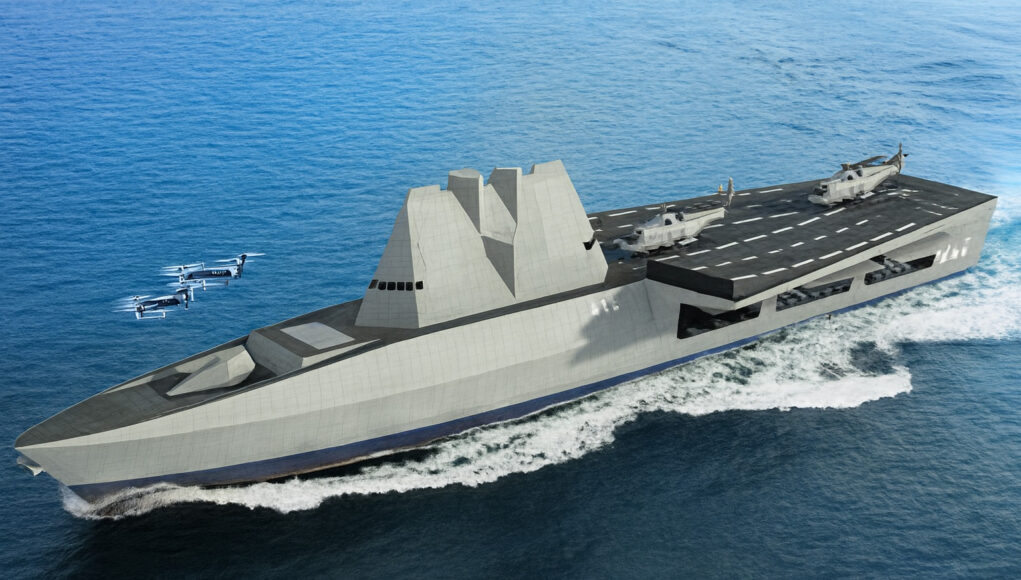
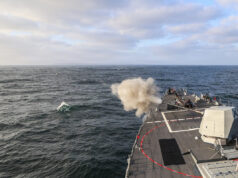
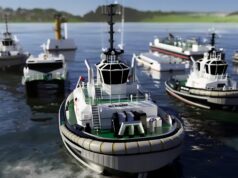
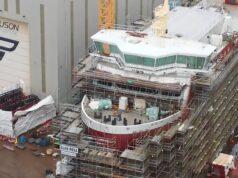
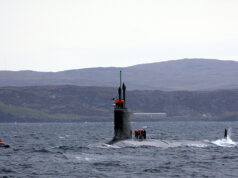
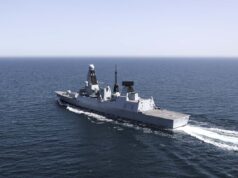


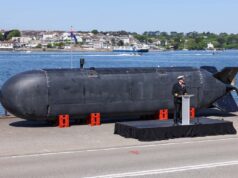
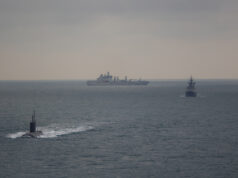
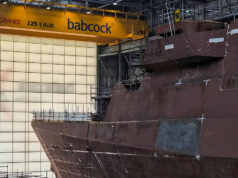

Had we pursued a prototype we may have had world beating platform by now – BVT are to be congratulated on their vision. The concept was absolutely spot on. More relevant and cost effective than the QE class. Sadly the Navy are n to so forward thinking
So the Queen Elizabeth can launch F35, that’s its primary reason for existing.
What would this done carrier be lunching in 2025 if it was in service today?
What can this drone carrier do that we can’t do off the back of a Bay class or even a River class?
First problem is that a Bay class needs to put to sea to be able to launch anything….
But I agree the idea that you could operate F35B from such a, relatively, tiny platform doesn’t parse now we know how much more complex and bigger they are than Harrier.
As I have speculated a few times the best, initial, drone carrier would be a merchant conversion that could be built entirely to civilian standards and adapted quite roughly with a view to be altered in service much as Argus actually was.
True, Ocean was built to commercial standards and gave great service.
Ad those commercial standards and fittings caused a great deal of grief. A false economy.
Your point actually made me reflect on the original HMS Argus, the RN’s first aircraft carrier and ex merchant liner. And if drones and drone warfare follow an arc anything similar to manned fixed wing flight, then its almost inevitable that navies will start to look more seriously at drone specific platforms. And that could just be as aviation support or force multiplier, accompanying a traditional aircraft carrier or other capital ship. And lets be honest, that’s what the RFAs Engadine and Argus were purchased for, as the RN adapted to growing numbers of helicopters and a rotary world. I guess at one time the helicopter only carrier was probably controversial too?
So we built two great big Carriers instead and so far managed to carry just 22 F35’s in almost 9 years of use and now they are “Evolving” into something first (and rather ahead of it’s time) envisaged two decades ago. In addition to that, T32 has been and still is described as a “Platform for autonomous vehicles” and still we have no “autonomous vehicles” (to speak of) to embark on this “forward thinking” design concept.
“That’s where we are I guess”
Some contradictory takes here. My take is that it was a concept to demonstrate a future that was still some way off back then. As a result intermediary solutions as indeed happened with original carriers was and is the right solution because too many questions were far from having answers. Twenty years later the sort of drones useful at sea are still in their infancy and somewhat limited but drone categories are beginning to be determined, roles and capabilities far more understood and predictable. So I suspect the time for specialist ships may not be too far off though still difficult to predict their exact nature or what level of capabilities they should have. So yes learn more by introduction on present or converted platforms while you work out what works and doesn’t work and what expectations can be realised or reigned back, even developing all the support technology required. Feed all this into a specialised design office and see what proposals come out of it then progressively judge viability till something truly understood can be developed.
My gut feeling is surface and underwater drones will be matured before truly useful airial drones operated from naval platforms but advances may change that stance. The choice will likely become whether you do separate thus smaller specialist platforms ie separately for surface and aerial, a larger combined platform a bit like a modern tale on the BVT design, or relatively traditional military designs for example the T-31 (but from the process I layout above other options may better suit) heavily modified at the design stage over in service adaptations. But at some stage drones will become so capable and universal specialist ships will very likely offer a substantial advantage over merely adapting existing platforms even as they become more drone capable in their own right. Timing will be the key.
A smaller navy means fewer specialized ships, not more.
That’s what kind of happened with HMS Argus in the 1930s. It was an operational carrier, then it was used for launching queen bee drones, and it went back into operational use as an escort carrier operating Hurricanes, I think.
This reminds me of some of the 1970s Sea Control Ship concepts from the US navy, a cut down carrier designed primarily for anti-submarine operations with helicopters and either 3 Rockwell XFV-12 VTOL fighters or 3 AV-8A Harriers. Ironically, the SCS project for a cut-price carrier was cancelled as part of a cost cutting exercise.
Oh the irony! It appears that western navies are reluctant to innovate – Unlike the Chinese navy where one shipyard outproduces the whole of the US!
Is anyone on here old enough to remember the Harrier Carrier concept? As I recall it was a destroyer sized ship that was intended to launch and recover the aircraft via a large crane, apparently the aircraft would hover alongside and then the crane would grab it on the top and swing it inboard. As you might imagine it didn’t go far. I think someone also postulated a small carrier, circa 8k tons, with a through deck and able to carry four or five aircraft. Again, no takers.
Interestingly, the Sea Control Ship concept did see the light of day, the Spanish carrier was built to a similar design, and I believe the Thai navy also had a similar ship as well. The designers were Gibbs and Cox.
You are conflating two concepts. The Harrier Carrier was for a very (too) small carrier designed to operate Harriers off its flat top. The Skyhook concept was to operate Harriers off a ship with no flight deck.
Both ideas were impractical.
You are absolutely right, both ideas were indeed impractical. What is interesting is that through the ages people have always been touting their pet theories, for instance the “short fat frigate” about 40 years ago. Whoever was promoting it made an awful lot of noise in the press about how much cheaper it would be, until it was pointed out that x thousand tons of steel costs the same to weld whatever the shape you choose, including making it into a square. The major part of the cost is the electronics and weapons. If you go back to the 1860’s and HMS Captain the lobbyists eventually forced the Admiralty to build the ship which promptly sank as soon as it hit moderate weather.
The Harrier Skyhook. It wasn’t an entirely new idea. Fighters were launched with the assistance of rockets from escort destroyers in the WW2, I believe, and then ditched in the sea on landing.
The Harrier Skyhook. It wasn’t an entirely new idea. Fighters were launched with the assistance of rockets from escort destroyers in the WW2, I believe, and then ditched in the sea on landing, which doesn’t sound like much fun.
There’s no point in having 3 Harriers. Its simply not enough to keep one in the air at all times. The Harrier in the 1970s was going to get close enough to fire on a backfire before it got in range anyway.
Ahhh,
That’s the mythical T32 that Boris mentioned.
“Don’t mention the T32, I mentioned it earlier, think I got away with it”.
Great concept and I think from memory there were a few designs, one having a Trimaran hull (RS Triton Style) and water jet propulsion.
Nope. Not even close.
The Navy was asked to forecast future ship requirements and said they would need a follow on on to the Type 31’s. They deliberately left the door open to a design that wasn’t just a Type 31 batch 2 by calling the future requirement the Type 32.
Boris had nothing to do with any of that apart from him announcing the idea.
It was “Tongue in cheek”. 🤦♂️
“Boris had nothing to do with any of that apart from him announcing the idea”
Yep, that’s what I said.
Deary deary me “I caught a live one here”. 🤦♂️😁
UXV Combatant would have frightened the bean counters off for a start. Type 33 would have been better.
Perhaps Type 26D and we might have got a couple.
“HMS Prince Of Wales is becoming a Drone carrier by evolution”
Hmmm, that’s rather a convenient development never (never really seriously) envisaged during It’s design, order or build, suppose It’s sort of like Turkey’s F35 Carrier that “Evolution” has led to it being a Drone Carrier. 🤔👀
Or was it not enough F35’s ?
Exactly.
The POW is not becoming just a drone carrier. It happens to be the carrier available currently to test the efficacy or otherwise of various experimental drones to be used in the future as additions to the F35s and helos.
If and when decisions are made, they will be available to both carriers, whichever one is on duty at the time.
The Headline is what I “Quoted”, I can see perfectly the direction this is going.
“Empty Vessels, make great Drone Carriers” I think that was the saying !
I know, but I think the article is misleading. POW is becoming a drone Carrier only in the sense that it will carry drones along side F35 and helos. It won’t carry only drones. If it did, it would mean that when QE is in deep maintenance we have nothing to fly F35 off if the shit hits the fan. So I expect both carriers to carry both F35 and drones.
The real issue is where the money is for all this in big quantities, because I don’t see it coming.
Hi James, thanks for the comment. Just to clarify, the article doesn’t claim that Prince of Wales is becoming a drone-only carrier. It describes how the Royal Navy is integrating drones into existing ships, including carriers, rather than pursuing bespoke designs like the UXV Combatant. Saying the ship is “becoming a drone carrier” refers to the fact that it is now operating drones as part of its regular aviation role, not replacing F-35Bs or helicopters.
The point is about broadening capability, not narrowing it. The Future Maritime Aviation Force is clearly heading toward a hybrid air wing model, where drones work alongside crewed aircraft. The article actually highlights that approach and does not suggest a shift away from fixed-wing strike.
On funding, I agree that scale is the real test. Trials are valuable, but turning them into fleet-wide capability takes sustained investment. That said, the current tempo of drone trials on Prince of Wales, including the Mojave and T-150, suggests this is not just window dressing. It reflects a serious intent to bring uncrewed systems into the heart of carrier operations.
Such a ship effectively is suited for the most part to drones that traditionally would otherwise been manned platforms or the level immediately below. Far from ideal for all manner of other drone types that fit below that in size and weight or introduce through ai or remote control capabilities, flexibility or opportunities far removed from those and far better deployed from smaller platforms be they original designs or adapted and modified vessels.
Back to the Carriers and the sort of drones they will employ, just read a view that if the new US Navy fighter gets built (or F-47 derivative) it’s planned to have 25% greater range than a F35-C, yet especially by the time it enters service with even greater threats that would still place US Carriers in the serious danger zone if they want to strike China. So remote drone refuelling options would be absolutely required to avoid it. Where does that place expectations on UK carriers in future years drones or otherwise. Nowhere near China I hope.
There is a reason that the US would never dare attack China. Which is the same for Russia. They’re both nuclear superpowers. Not only that, North Korea is in the same region and they also have nukes capable of reaching anywhere in the US. Any detection of the US initializing ICBMs and all Western powers would be vaporized in less than 8 minutes. Talks of attacking a nuclear superpower is only for the uneducated.
Having said that I hope I never see it. The US was humiliated repeatedly by the Chinese over DF Trump’s trade war with them. So he knows that China doesn’t never backs down. Anyone who knows anything about the Korean war where the US led 26 other countries to crush the North Koreans knows that China is not to be messed with. Despite leading 26 other countries with state of the art weaponry fighting the Chinese who essentially didn’t even have their own weapons or food after a bloody civil war still managed to save North Korea. As they are here today.
There’s another reason the US (and UK) would never attack China or Russia: we just want to be left alone to make money and enjoy a good and rising standard of living, and (until somebody threatens that, or we think they do) would rather focus on domestic issues – the sort of things that make our leaders more likely to get re-elected,
The Queen Elizabeth class was designed to allow the operation of future types of aircraft during its 50 year life.
Just like every other major carrier.
To sneer at this ability is beyond stupid.
Always thought the UVX was an interim solution. As it could have evolved in to a trimaran version without the angled flight decks. Instead having the two flight decks over the outriggers parallel with the main hull. I guess we will never know now.
“Triton” was deemed too unstable, or that’s how I remember it. A lot of these designs remained just paper concepts just like T32.
Triton is diddy compared to what a trimaran version of UVX could have been. Would it have had the same issues?
It seems converting a LHD to a drone carrier is catching on. After Turkey’s Anadolu, China is doing the same with their new huge Type 76. Where it is being fitted with a EMALS catapult for larger fixed wing drones. Could the Type 76 be the first of many as per their previous smaller Type 75s or be used as a ship for testing drones? It’s a pity the Forces are broke as a couple of Trieste type LHDs would have been ideal for the RMs, as well as being used as a trials ship for drones etc, rather than taking the carriers off-line.
I’m no ” Ship Designer” (apparently only an expert in ship design can comment about, ship design on here) so I can’t possibly comment on that. All I remember is Triton was a Scale Model (working) at the time, used to test all manner of different perameters with a view to a possible full sized RN design. As a test, it was succesfull in providing the answers.
She was (a few weeks back) tied up at Portland, looking rather bare and shabby but given the use she had post trials, I guess her design wasn’t all bad.
QE’s were deemed to be the way forward after the previous “Way Forward” class was deemed Obsolete, should we just have built 3 smaller Trieste’s ? Maybe, who can say for sure.
Turkey had no real choice after F35 sales were blocked.
China is on another level entirely when it comes to “Getting on with it”. The PLAN is wholely dismissed on most sites like this, I’d love to see an in depth article highlighting the speed and development of what is now a true “Blue Water Navy” (allbeit without the overseas bases and Infrastructure and Logistics).
We get excited about 8 T26’s and 5 T31’s being built (Glacially) as part of the NATO group’s assets but China Is going Ballistic, literally !
China doesn’t have a blue navy yet. But it’s believed that their next version of aircraft carrier will be a nuclear powered supercarrier significantly larger than USS Gerald Ford.
They’ve also developed miniature nuclear power. So they’ll likely be testing those on their massive type 055 destroyers that are so big that the Americans classify them as cruisers.
At their rate of development they could probably have a sizeable strike force by 2030. Big enough to make NATO blink a few times as they casually conduct live fire exercises off the coast of UK. Like they did with Australia.
You are a self proclaimed idiot. Triton was in no way a “scale model”. It was the first displacement trimaran designed to investigate a trimarans sea keeping ability.
China’s tolerance for the death of its pilots is significantly higher than democratic nations. Going back to the days of the Supermarine Scimitar where pilots had worse than a 50% chance of surviving 1 year due to accidents isn’t going to go down well with voters, or pilots for that matter. Getting on with it comes at a price in bodies.
Well the US trialed Triton before their own trimaran platform so it didn’t put them off.
Different requirements. Litterol V’s Open water.
I kept that short as I seem to have aquired an angry Grinch on a mission.
(Think I upset him last week).
🤣🤣🤣
You remembered nothing. Triton wasn’t “deemed” unstable by anyone at any time.
🤣🤣🤣
OK thanks.
Hard to envisage a current or future situation where it is necessary to design a whole platform entirely around the needs of one or more unmanned systems. Wouldn’t be very future-proof either.
I fear that might come back to haunt you. Will probably be a time when a combination of drones and missiles will be the most Imortant aspects of warships I suspect. They will become increasingly vulnerable. Geez some are claiming the submarine will be extremely detectable vulnerable by the thirties. I fear if that should come to pass what chance a surface vessel without all manner of defensive and flexible offensive long distance weaponry.
Convert civil ships for drones ,this will be done if ever we have to ,when the 💩hits the fan this country always rises to the test.
Hey guys, didn’t we discuss this all those years ago? Just how good it would be to see these being built.🤔😉🤣😒
18 years ago, I was a spotty Teanager.
Honest,
No It’s true,
Well OK, I made it up !
“You are only as old as you feel”.
Yeah the Royal Navy had a UAV aircraft carrier with HMS Argus and her De-Havilland DH.82 Queen bee aircraft
Rapid firing 155 mm? How can they pull that off.
Aw, isn’t that cute. The English thought they had a futuristic drone carrier concept that was way ahead of its time.
Meanwhile, other’s have drawn up star destroyers bigger than our sun with cannons that can create black holes or vaporize our entire galaxy with one shot. Fold space and time to warp in entire armadas from different dimensions.
Fast forward a couple decades and the US is facing bankruptcy, barely even keeping their navy afloat with bandaids. The UK’s navy is now comparable to the Philippines.
The only country that is becoming closer to sci-fi level infrastructure and military might are the Chinese.
That you can’t tell the difference between the UK and England makes the rest of your comment hard to take seriously.
According to the English, all over states in the UK kneel to them and are of no consequence.. Now, run along and have a nice day.
Moron…what on earth are you gibbering on about.
HMS Argus was ahead of its time being used as a drone training carrier in 1930s, that still worked.
Bae did several Type 45 derivatives around this time in order to extend the limited T45 production run. The UXV was one of them. Another was the stretched land attack variant and they also studied a smaller version without the S1850 radar. Unfortunately none of them were able to attract further orders.
It was just REALLY bad idea. Hybrid warships have been tried and failed time after time. The other bad idea that keeps resurfacing every 30 years or so is the “Jeune ecole” one of some new wonder weapon that is magically going to make warships smaller and cheaper ignoring the basic facts of seakeeping, hull volume, vulnerability and economies of scale. Expect more such ill informed thinking soon.
For me the more interesting design concept of a drone carrier was the Dreadnought 2050 Destroyer/Frigate of a few years back